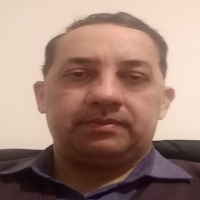Surgery and Anesthesia
Surgery 2025
- Home
- Scientific Program

Azad University Science and Research Branch, Iran
Abstract:
Purpose: The spinal fusion is one of the most used surgeries that is performed on spine to correct the alignment. The important factor in this surgery is the spine stability in addition to preservation of the spinal cord from collision with the fixation screws.
Methods: The spine region that was needed to expose in surgery was captured by CT as the base data-set of pre-op planning. The CT-Dataset imported in MIMICS software and the trajectory of screws was designed with their guide dimensional achieving. The 3D-Printing method was used to manufacture the designed patient-specific guide for each spinal level and was sterilized and used in operation room for a patient.
Results: To compare the outcomes of the 2 patients operated by conventional PSF and Guided PSF is shown that the time of surgery is decreased and the accuracy of the screw orientation is safer and risk amount decreased in compare with the conventional approach.
Conclusion: The Patient-Specific Instruments are new and promising devices to expedite the operation process and decreasing the risks of surgery specially in posterior spinal fusion. The 3D-Printing facilitated the manufacturing process of the complicated geometry guides with serializable materials.
Keywords: Pre-Op Planning, Posterior-Spinal Fusion, Patient-Specific Guide, Additive Manufacturing
Biography:
Dr. Amir Hossein Saveh
has completed his PhD at the age of 37 years from Amirkabir University of
Technology. He is the Assistant Professor of Biomechanics at Azad University
Science and Research Branch. He has published more than 15 papers in reputed
journals and has been serving as an editorial board member of repute.
Evolve a road map to explore solutions to your next-generation science and technology challenges at a place where scientists, clinicians, scholars, academicians, and policymakers shake hands to strategize visionary ideas and life-saving formulas. Be part of the dynamic forum that knows no boundaries to mastermind breakthroughs that the digital age is awaiting.
Contact Us
Scitechseries Publishing Limited
71-75, Shelton, Covent Garden
London, WC2H 9JQ
Email: Surgery@scitechconference.com
Phone: +44-2045874848
WhatsApp: +44 2045250803
Sponsor/Exhibition:
Email: sponsorship@scitechseries.com
